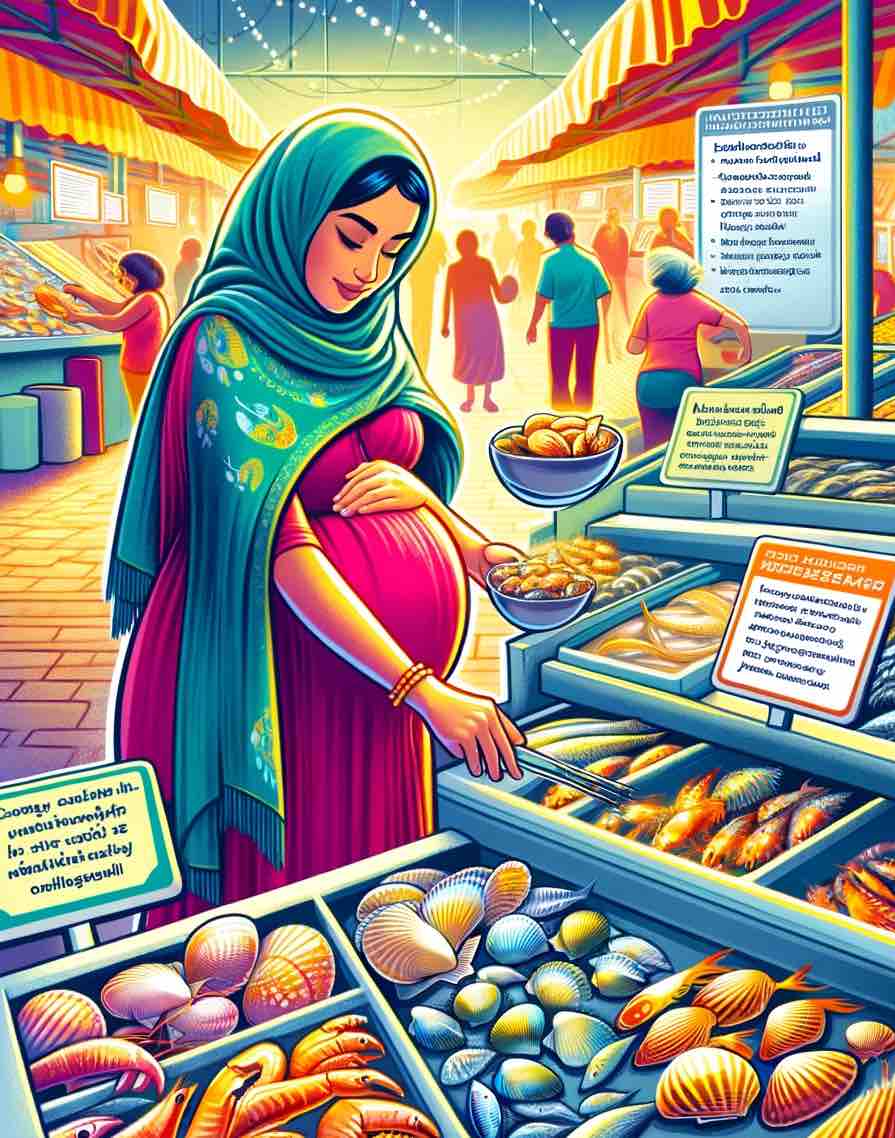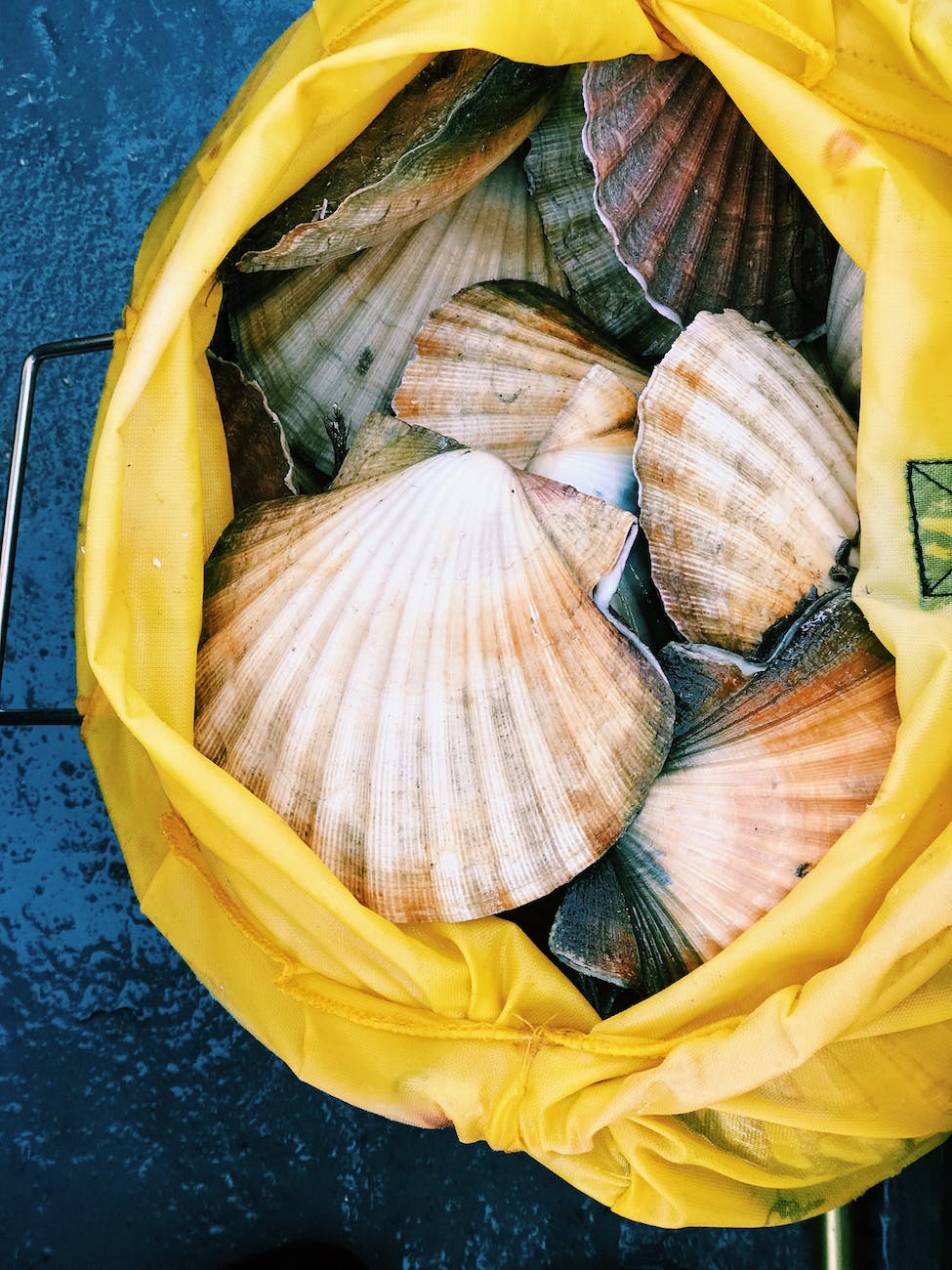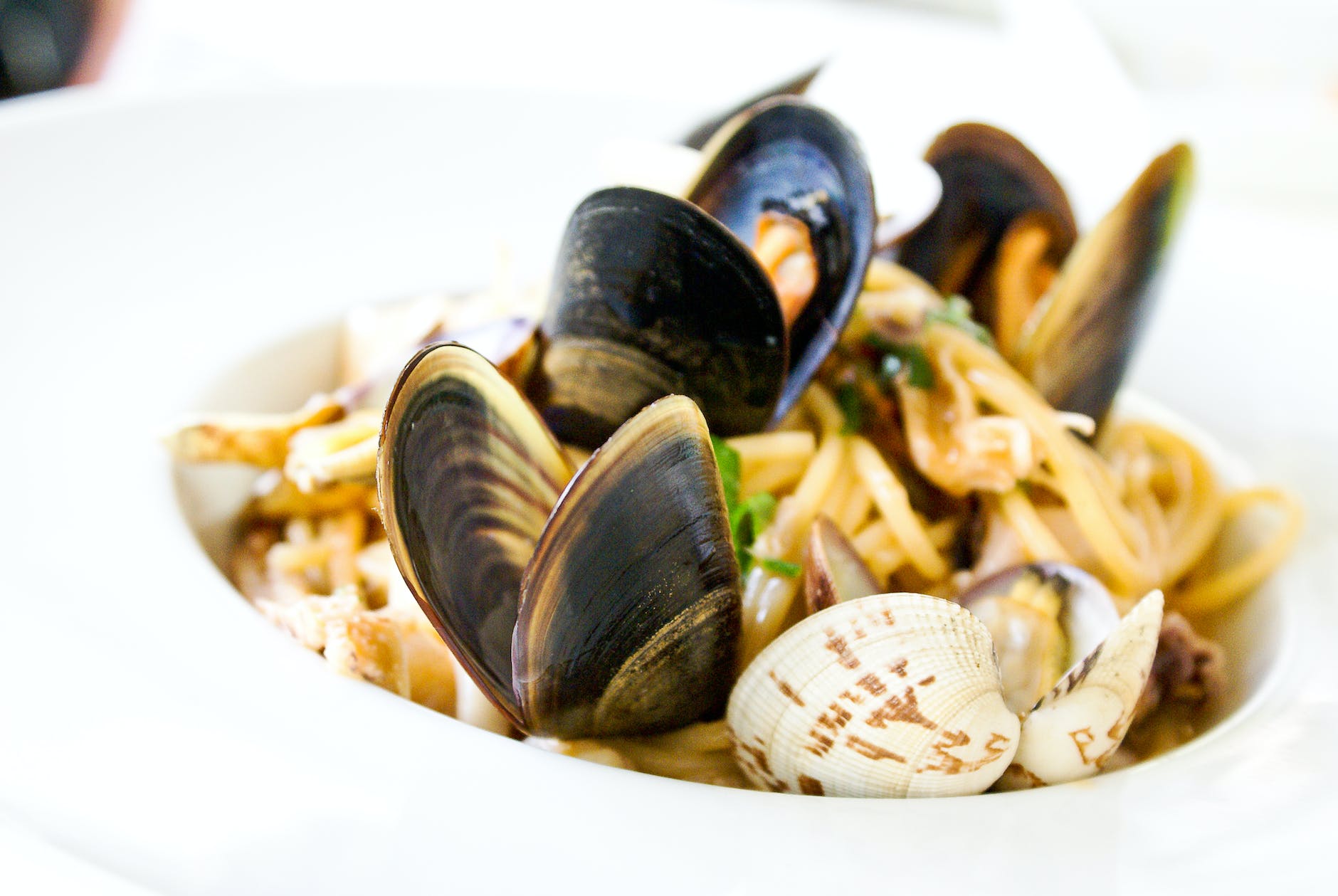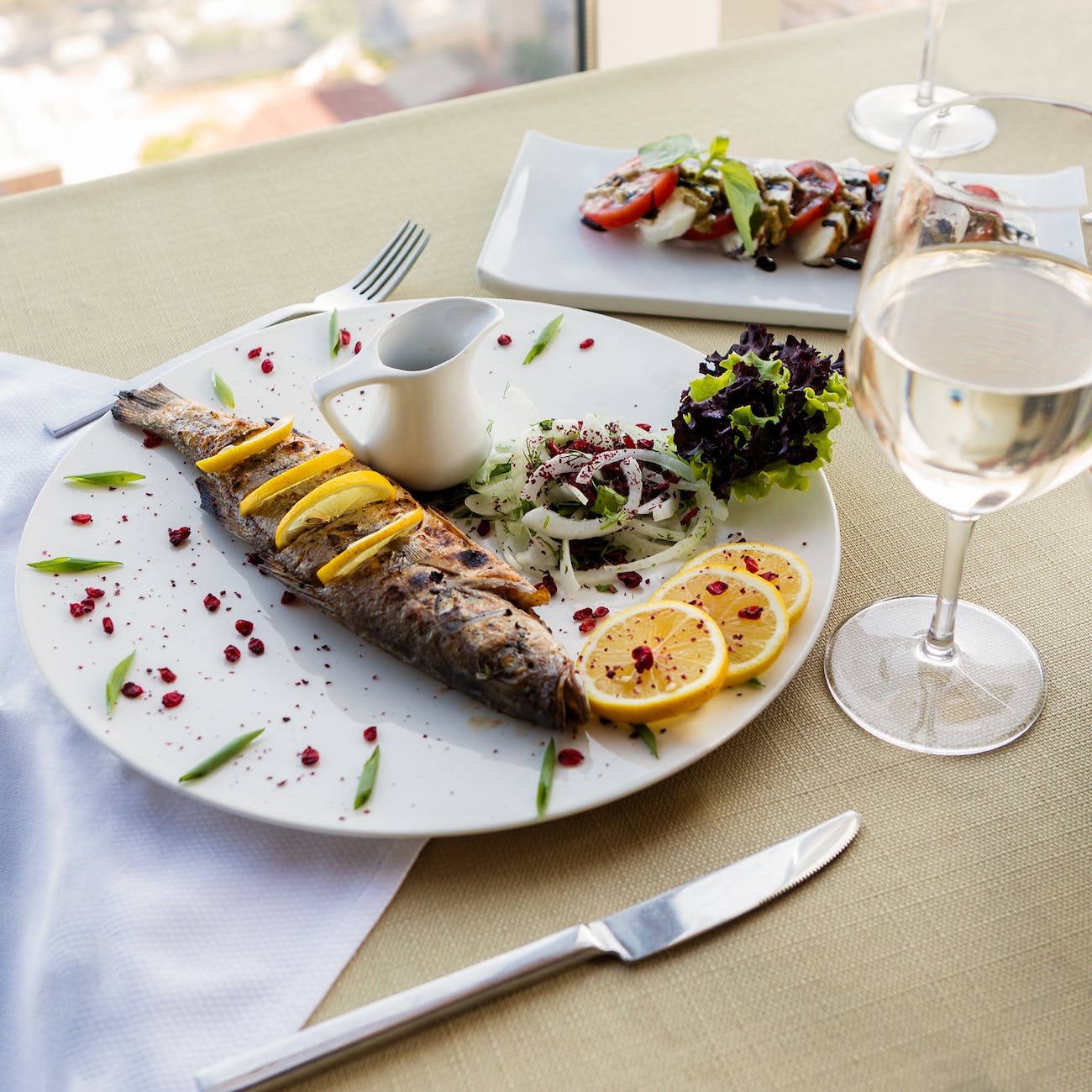
Introduction
Embarking on the journey of pregnancy brings with it a heightened awareness of the foods we eat and their impact on the little life growing within. Among the myriad of dietary choices to consider, shellfish often spark curiosity and concern in equal measure. Are they a nutritional boon or a hidden risk during pregnancy?
In this comprehensive guide, we delve into the world of shellfish—a diverse group encompassing everything from shrimp and lobsters to clams and oysters. These marine delicacies are not only flavorsome but also packed with nutrients that can play a crucial role in supporting both your health and your baby’s development. However, as with many foods, there are important considerations to ensure their safe consumption during pregnancy.
Navigating the sea of advice on eating shellfish while expecting can be challenging. There are valid concerns about mercury content, the risk of foodborne illnesses, and the question of which types of shellfish are safe. Yet, understanding these concerns in the context of the nutritional benefits they offer brings clarity and confidence to your dietary choices.
In the following sections, we will explore the nutritional profile of shellfish, the potential risks and how to mitigate them, and how to safely incorporate these nutrient-dense foods into your pregnancy diet. Whether you’re a seafood aficionado or new to the delights of shellfish, this guide aims to provide you with the information you need to make informed, healthy choices for you and your baby. Let’s dive in and discover the role shellfish can play in a nourishing pregnancy journey.
Section 1: Understanding Shellfish and Their Types
Embarking on a journey through the world of shellfish during pregnancy requires an understanding of what shellfish are and the various types available. This knowledge is crucial in making informed choices about including them in your prenatal diet.
Defining Shellfish
- What are Shellfish?: Shellfish are aquatic invertebrates that are commonly consumed as food. Despite their name, they are not actually fish. They belong to the aquatic animal family and are characterized by their hard exoskeletons or shells.
- Types of Shellfish: There are two main subclasses:
- Crustaceans: This group includes animals with a hard shell and joints, such as lobsters, crabs, and shrimp. They are often known for their rich, meaty texture and are popular in a variety of cuisines.
- Mollusks: These can be further divided into:
- Cephalopods: Such as octopuses and squids, known for their symmetrical bodies and protruding heads.
- Bivalves: Like clams, mussels, and oysters, which have hard, hinged shells. They are particularly noted for their high nutritional value.
Nutritional Overview
- Nutrient-Rich: Shellfish are praised for their nutrient density. They are rich in omega-3 fatty acids, essential for fetal development, and contain a host of other beneficial nutrients such as protein, calcium, vitamin D, and iron.
- Unique Benefits: Each type of shellfish offers a unique nutritional profile. For example, bivalves are known for their high concentrations of vitamins and minerals that are critical during pregnancy.
Sustainable Choice
- Eco-Friendly Option: Besides their nutritional benefits, shellfish are also considered a sustainable food choice. Many types of shellfish are farmed with methods that have minimal environmental impact, making them a responsible choice for eco-conscious consumers.
Understanding the types of shellfish and their nutritional profiles is the first step in evaluating their place in a pregnancy diet. This section lays the foundation for further discussions on their benefits, risks, and safe consumption methods. Next, we will delve into the rich nutritional benefits that shellfish offer to both the expecting mother and the developing baby.
Section 2: Nutritional Benefits of Shellfish in Pregnancy
When it comes to prenatal nutrition, shellfish stand out as a powerhouse of essential nutrients. This section highlights the key nutrients found in shellfish and how they contribute to the health and development of both the mother and the baby during pregnancy.
Omega-3 Fatty Acids: Essential for Fetal Development
- DHA and EPA: Shellfish, especially bivalves, are rich in omega-3 fatty acids like DHA (docosahexaenoic acid) and EPA (eicosapentaenoic acid), which are crucial for the baby’s brain and eye development.
- Benefits: Regular intake of omega-3s from shellfish can support fetal neural development and reduce the risk of premature birth.
Rich in Key Vitamins and Minerals
- Vitamin B12: Shellfish, particularly clams, are an excellent source of vitamin B12, surpassing even organ meats in their content. This vitamin plays a vital role in fetal brain development and cell formation.
- Iron: The bioavailable heme iron in shellfish, especially in clams, is crucial for preventing maternal anemia and supporting the baby’s growth. Shellfish iron is often more easily absorbed compared to plant-based iron sources.
- Zinc: Essential for immune function, zinc in shellfish supports healthy pregnancy outcomes and reduces the risk of complications like preterm birth.
- Vitamin B3 (Niacin): Certain types of shellfish are good sources of niacin, which can help manage nausea, a common symptom in early pregnancy.
Other Beneficial Nutrients
- Copper and Selenium: These trace minerals in shellfish aid in iron metabolism and support thyroid and immune functions, respectively.
- Taurine: An amino acid found abundantly in bivalve shellfish, taurine contributes to various aspects of fetal development, including the central nervous system and eye health.
Addressing Nutritional Gaps
- For Non-Fish Eaters: Shellfish offer an alternative for those who may not prefer fish but still want to include marine-derived nutrients in their diet.
- Dietary Diversity: Including shellfish in the diet adds diversity, providing different nutrient profiles compared to land-based animal products or other seafood.
The nutritional benefits of shellfish make them an excellent addition to a pregnancy diet. They not only contribute to the critical developmental needs of the fetus but also support the overall health and well-being of the mother. In the next section, we will explore the risks associated with consuming shellfish during pregnancy and how to safely navigate these concerns.
Section 3: Risks and Concerns with Shellfish Consumption During Pregnancy
While shellfish are a treasure trove of nutrients, it’s imperative for expecting mothers to be aware of certain risks associated with their consumption during pregnancy. This section addresses these concerns and offers guidance on how to safely include shellfish in a prenatal diet.
Understanding Mercury and Heavy Metals in Shellfish
- Mercury Content: One of the primary concerns with eating shellfish during pregnancy is the potential mercury content. Mercury, particularly in its methylmercury form, can be found in the aquatic food chain and may pose a risk to the developing nervous system of the fetus.
- Heavy Metals Consideration: Alongside mercury, other heavy metals like lead and cadmium can sometimes be present in shellfish, depending on their habitat and environmental conditions. These metals can have adverse effects on fetal development if consumed in high quantities.
Addressing the Risk of Foodborne Illnesses
- Potential Contaminants: Shellfish, especially raw or undercooked, can harbor harmful pathogens such as Vibrio, hepatitis A virus, and norovirus. These contaminants can cause foodborne illnesses, which are particularly concerning during pregnancy due to altered immune function.
- Listeriosis and Other Infections: Pregnant women are more susceptible to listeriosis, a serious infection caused by Listeria bacteria, which can be found in improperly handled shellfish. This infection poses severe risks including miscarriage, stillbirth, and preterm labor.
Safe Consumption Practices
- Fully Cooking Shellfish: To mitigate these risks, it’s crucial to consume shellfish that is fully cooked. Proper cooking can significantly reduce the risk of bacterial and viral infections.
- Sourcing from Reputable Suppliers: Ensure that the shellfish you consume is sourced from reputable suppliers who adhere to strict safety standards. This minimizes the chances of contamination from polluted waters.
- Avoiding Raw Varieties: Pregnant women should avoid raw shellfish preparations like sushi, sashimi, and ceviche. These dishes can carry a higher risk of containing harmful pathogens.
Precautions for Allergic Reactions
- Allergy Considerations: If you have a history of shellfish allergies, it’s crucial to avoid shellfish during pregnancy, as allergic reactions can have serious implications for both mother and baby.
Regular Monitoring and Consultation
- Regular Health Check-ups: Regular consultation with healthcare providers is vital to monitor any potential adverse reactions or health concerns related to shellfish consumption.
- Personalized Dietary Advice: Every pregnancy is unique, and dietary choices should be tailored to individual health needs and medical histories.
In summary, while shellfish can be a nutritious addition to a pregnancy diet, it’s essential to be aware of the risks and to consume them safely. By understanding these risks and adhering to safe consumption practices, you can enjoy the benefits of shellfish while safeguarding your health and that of your baby. In the next section, we will explore how shellfish can be safely consumed at different stages of pregnancy.
Section 4: Safe Shellfish Consumption Throughout Pregnancy
Navigating through each trimester of pregnancy involves adapting your diet to meet the changing nutritional needs and ensuring the safety of what you consume. Understanding how to safely incorporate shellfish during each stage of pregnancy is crucial due to their rich nutritional profile and the potential risks they carry.
First Trimester: Establishing Safe Eating Habits
- Focusing on Safety: The first trimester is a time of significant development for the fetus, including the formation of vital organs. It’s crucial to establish safe eating habits early on.
- Importance of Fully Cooked Shellfish: Ensure that any shellfish consumed is thoroughly cooked to reduce the risk of foodborne illnesses, which can be more dangerous during pregnancy due to changes in the immune system.
- Managing Morning Sickness: For those experiencing nausea or morning sickness, lighter shellfish dishes, like steamed shrimp or broiled fish, might be more palatable and easier to digest.
Second Trimester: Nutritional Requirements Increase
- Boosting Nutrient Intake: The second trimester sees an increase in the baby’s growth rate, elevating the need for essential nutrients. Shellfish, being high in iron and omega-3 fatty acids, can be particularly beneficial during this time.
- Diverse Preparation Methods: Experimenting with different cooking methods, such as grilling or adding shellfish to stews and soups, can provide enjoyable ways to include these nutrients in your diet.
Third Trimester: Preparing for Birth
- Maximizing Omega-3 Intake: In the third trimester, the baby’s brain development is rapid. Consuming omega-3 rich shellfish can support this crucial phase.
- Food Safety Vigilance: As the due date approaches, maintaining vigilance on food safety becomes even more critical. Avoid raw or undercooked shellfish and be cautious about the source of the shellfish to prevent any risk of contamination.
General Guidelines for Safe Consumption
- Cooking Temperature: Shellfish should be cooked to an internal temperature of 145°F (63°C). This ensures that harmful bacteria and viruses are eliminated.
- Sourcing from Reputable Suppliers: Always buy shellfish from trusted sources. This minimizes the risk of consuming shellfish that might have been exposed to pollutants or harmful algal blooms.
- Avoiding High-Mercury Varieties: Be mindful of the types of shellfish you choose, avoiding those known to have higher mercury levels.
- Balancing with Other Foods: While shellfish can be a great addition to your diet, balance them with other protein sources, fruits, vegetables, and whole grains to ensure a well-rounded nutritional intake.
In conclusion, understanding and adhering to safety guidelines for consuming shellfish can allow you to enjoy their nutritional benefits throughout your pregnancy. Each trimester brings its own set of dietary considerations, and by following these guidelines, you can support your health and your baby’s development safely and effectively. As we move to the next section, we’ll look into specific types of shellfish that should be avoided during pregnancy, as well as the best choices for safe consumption.
Section 5: Types of Shellfish to Avoid During Pregnancy
While shellfish can be a nutritious addition to a pregnancy diet, it’s crucial for expecting mothers to be aware of certain types that should be avoided or limited due to potential health risks. This section will guide you through the types of shellfish that are best left off your plate during pregnancy and explain the reasons behind these recommendations.
Understanding the Risks
- High Mercury Shellfish:
- Certain types of shellfish, like some larger predatory fish, can accumulate high levels of mercury. Mercury is a heavy metal that can be detrimental to the developing nervous system of the fetus.
- Shellfish such as swordfish, king mackerel, and shark are known for higher mercury content and should be avoided.
- Shellfish Prone to Contamination:
- Some shellfish, especially those harvested from polluted waters, can contain harmful bacteria, viruses, or toxins.
- Pregnant women need to be cautious about where their shellfish comes from and ensure it’s sourced from clean, uncontaminated waters.
- Allergy Considerations:
- If you have a known allergy to shellfish, it’s imperative to avoid them entirely during pregnancy, as allergic reactions can pose risks to both the mother and the baby.
Safe Alternatives for Pregnant Women
- Low Mercury Options: Shrimp, crab, and lobster are generally considered safer choices during pregnancy, as they typically have lower mercury levels.
- Ensuring Freshness and Quality: Opt for shellfish from reputable suppliers known for their stringent safety standards and fresh, high-quality products.
Cooking and Preparation
- Thorough Cooking: Even safe varieties of shellfish should be thoroughly cooked to an internal temperature of at least 145°F (63°C). This is crucial to kill any potential bacteria or parasites.
- Avoid Raw Preparations: Dishes like sushi, sashimi, or ceviche that involve raw or undercooked shellfish should be avoided due to the increased risk of foodborne illnesses.
Additional Precautions
- Moderation in Consumption: Even with safer options, it’s wise to consume shellfish in moderation as part of a balanced diet.
- Consult Healthcare Providers: Always consult with your healthcare provider if you have any doubts or concerns about including shellfish in your pregnancy diet.
By understanding and adhering to these guidelines, you can navigate the complexities of consuming shellfish during pregnancy. The focus should always be on ensuring the health and safety of both you and your baby. In the following section, we’ll discuss the potential risks of foodborne illnesses associated with shellfish consumption and how to mitigate these risks effectively.
Section 6: Reducing the Risk of Foodborne Illnesses
When considering shellfish as part of a pregnancy diet, it’s crucial to address the risk of foodborne illnesses. This section will explore potential risks associated with eating shellfish during pregnancy and provide helpful tips for safely consuming this nutrient-rich food.
Understanding the Risks
- Pathogens in Shellfish: Shellfish, particularly when raw or undercooked, can harbor pathogens like bacteria, viruses, or parasites. These can include Vibrio, hepatitis A, and other contaminants that could lead to serious foodborne illnesses. Pregnant women need to be especially cautious due to their altered immune systems, which may not effectively combat these pathogens.
- Filter-Feeding Nature of Shellfish: Many shellfish are filter feeders, meaning they can accumulate toxins and pathogens from their environment. This makes them susceptible to contamination, especially if sourced from polluted waters.
Safe Consumption Practices
- Source Selection: Opt for shellfish from reputable suppliers who adhere to strict safety and quality standards. This minimizes the chances of consuming contaminated shellfish.
- Freshness Check: Before cooking, ensure the shellfish is fresh. Look for a mild, oceanic smell and avoid any shellfish that is slimy or has an off-putting odor. For bivalves like clams and mussels, the shells should be closed or close when tapped.
- Proper Storage and Defrosting: Store shellfish in the refrigerator or freezer and follow safe defrosting practices. Avoid leaving shellfish at room temperature to prevent bacterial growth.
- Thorough Cooking: To eliminate harmful bacteria or viruses, shellfish should be cooked to an internal temperature of at least 145°F (63°C). Use a thermometer to confirm the temperature. Boiling, steaming, or sautéing are effective cooking methods.
- Avoiding Raw Varieties: Pregnant women should steer clear of raw or undercooked shellfish, including dishes like sushi, sashimi, or ceviche.
Handling Shellfish
- Separate Raw and Cooked Foods: Avoid cross-contamination by using separate cutting boards and utensils for raw shellfish. Ensure all surfaces and tools are cleaned thoroughly after use.
- Hand Washing: Wash hands before and after handling shellfish to prevent the spread of bacteria.
Considerations for Specific Conditions
- Allergies and Sensitivities: If you have a history of shellfish allergies or sensitivities, it’s advisable to avoid shellfish during pregnancy. The nutritional needs and health of the fetus are closely linked to the mother’s diet and well-being.
By understanding these risks and following the outlined safety precautions, pregnant women can reduce the likelihood of foodborne illnesses associated with shellfish consumption. Safe handling, storage, and cooking practices are key to enjoying the nutritional benefits of shellfish during pregnancy. In the next section, we will explore practical ways to incorporate shellfish into your diet, ensuring both safety and enjoyment.
Section 7: Incorporating Shellfish into a Pregnancy Diet
Navigating the world of shellfish during pregnancy can be a rewarding culinary adventure. Shellfish, with their rich flavors and dense nutritional profiles, offer a unique opportunity to diversify your prenatal diet while reaping significant health benefits. This section will guide you through incorporating shellfish into your diet, providing practical tips, recipe ideas, and considerations for dietary preferences and allergies.
Understanding Dietary Needs and Preferences
- Balancing Frequency and Quantity: While shellfish are packed with nutrients, moderation is key. Aim for one to two servings (3-6 ounces) per week to balance the benefits with potential risks.
- Addressing Allergies and Sensitivities: If you have a history of allergies or sensitivities, especially to seafood, it’s crucial to proceed cautiously. Consult with your healthcare provider for personalized advice.
Recipe Ideas and Meal Incorporation
- Simple and Delicious Recipes: Experiment with easy-to-prepare recipes like clam chowder using canned clams, steamed mussels with garlic and herbs, or a rich seafood stew. These dishes not only incorporate the goodness of shellfish but also are comforting and satisfying.
- Quick Snacks and Light Meals: For quick options, consider adding canned smoked oysters to salads, crackers, or as a topping on a savory toast. They can provide a nutrient boost without requiring extensive preparation.
Versatile Cooking Methods
- Cooking Techniques: Explore various cooking methods such as boiling, steaming, baking, or grilling. These methods not only ensure safety by thoroughly cooking the shellfish but also retain their nutritional value and enhance their natural flavors.
- Creative Pairings: Pair shellfish with a variety of grains, vegetables, and herbs. For example, a seafood paella combining different types of shellfish with rice and spices can be a nutrient-packed and delicious meal.
Exploring Canned Options
- Convenience of Canned Shellfish: In regions where fresh shellfish are not readily available, canned options like oysters and mussels offer a practical alternative. They are pre-cooked and can be added directly to dishes.
- Quality and Safety: Opt for brands that prioritize quality and safety. Check the labels for any additional preservatives or additives and choose options packed in water or olive oil for a healthier choice.
Adapting to Taste Preferences
- Masking Strong Flavors: If you find the flavor of shellfish too intense, try recipes that incorporate them with other strong flavors or sauces, which can help mask any overpowering taste.
- Experimenting with Different Types: Each type of shellfish has its unique taste and texture. Experiment with various kinds to find what suits your palate best.
Incorporating shellfish into your pregnancy diet offers a delightful blend of taste and nutrition. With careful consideration of food safety, moderation, and a little culinary creativity, you can enjoy the diverse flavors and health benefits of shellfish. Whether it’s through hearty soups, light salads, or quick snacks, shellfish can be a valuable addition to your prenatal nutrition plan.
Conclusion: Navigating the Waters of Shellfish Consumption During Pregnancy
As we conclude this comprehensive exploration into the world of shellfish during pregnancy, it’s clear that these marine delicacies can play a valuable role in a prenatal diet when consumed correctly. Balancing the rich nutritional benefits of shellfish with mindful attention to safety and preparation, expectant mothers can confidently include these foods in their meals.
Key Takeaways
- Nutritional Bounty: Shellfish are packed with essential nutrients like omega-3 fatty acids, protein, vitamins, and minerals, contributing significantly to the dietary needs of pregnant women and the healthy development of their babies.
- Safety First: The primary concerns with shellfish consumption during pregnancy revolve around mercury content, potential foodborne illnesses, and proper sourcing. Thorough cooking and choosing shellfish from reputable sources are key to mitigating these risks.
- Varied and Moderate Consumption: Incorporating shellfish into a pregnancy diet should be done in moderation and as part of a diverse diet. This approach ensures a balanced intake of nutrients while minimizing potential risks.
Embracing Dietary Diversity
- A well-rounded prenatal diet extends beyond just one type of food. Including a variety of fruits, vegetables, whole grains, lean proteins, and healthy fats, alongside shellfish, ensures a spectrum of nutrients essential for pregnancy.
- Exploring different culinary preparations and recipes can make the inclusion of shellfish in your diet both enjoyable and beneficial.
Consultation and Personalization
- Every pregnancy is unique, and dietary needs can vary. Consulting with healthcare providers or a nutritionist can provide personalized advice, ensuring your diet aligns with your specific health requirements and preferences.
- It’s also important to consider individual allergies and sensitivities, especially when it comes to seafood.
Final Thoughts
The journey of pregnancy is one of nurturing and growth, where diet plays a crucial role. Shellfish, with their nutritional richness, can be a valuable addition to this journey when approached with care and knowledge. This guide aims to empower expectant mothers with the information needed to make informed dietary choices, enhancing both their health and that of their developing baby.
As you navigate through your pregnancy, remember that the choices you make on your plate have a profound impact on your journey. Here’s to a healthy, happy pregnancy filled with nutritious and delightful meals!












